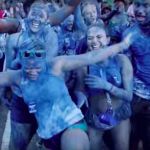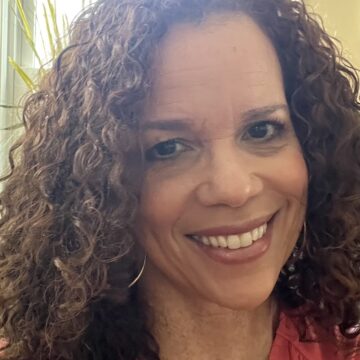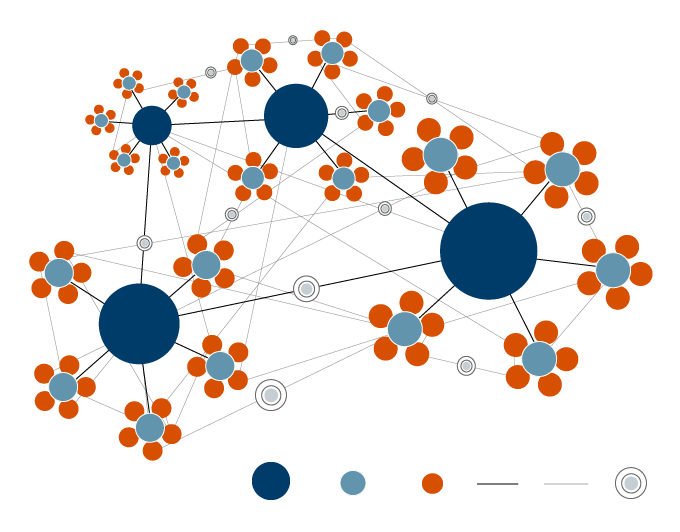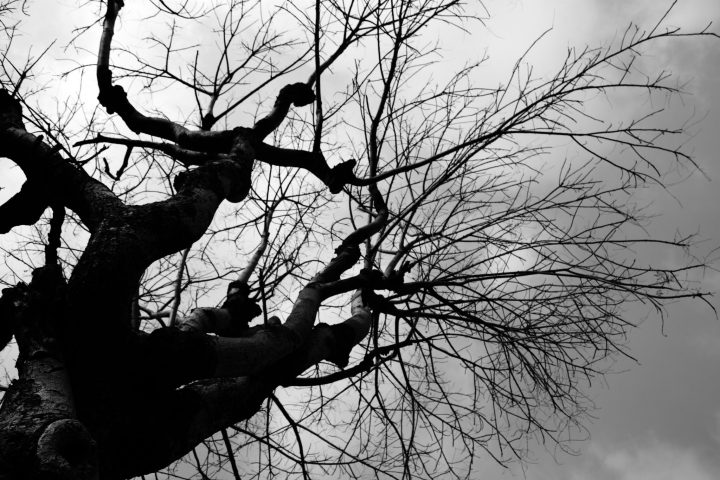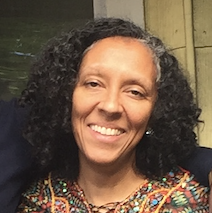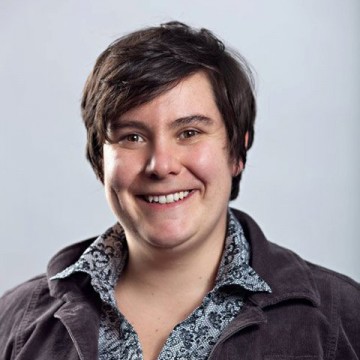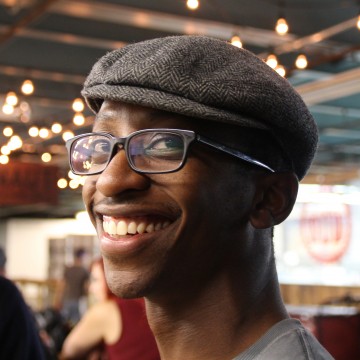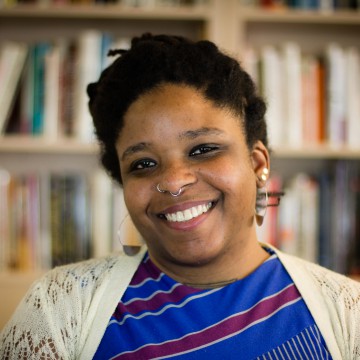Archives
April 18, 2018
“Network entrepreneurs are keenly aware that they are few among many working across the larger system, and in this way they embody a special type of … leader[ship].

Image by tarotastic, shared under provisions of Creative Commons Attribution License 2.0.
This is the third in a series of blog posts that appear in their entirety on the Education Week website. In the previous post we considered how structure has implications for the extent to which a network or networked activity is able to leverage different kinds of net effects and create value for diverse participants. We also considered how structure has implications for both equity and how power is distributed. Another important consideration in how to create equitable benefit is what leadership looks like and how it plays out in and around networked activity.
The concept of leadership seems to be undergoing a rapid evolution lately. Especially in this “network age” there appears to be both a growing appreciation that leadership has always been about more than the singular and highly visible heroic individual, and that going forward, leadership must be upheld as much more of a shared and multi-dimensional endeavor.
“Leadership for this era is not a role or a set of traits; it is a zone of inter-relational process. Step in, step out.”
In much of the collaborative consulting work that we do through the Interaction Institute for Social Change, leadership (or what we at IISC often call Facilitative Leadership) is about “holding the whole.” That is, there is a need for groups, teams, organizations and communities to think more expansively about the state of a given complex system (community, economy, food system, organization, school, school district) and pay attention to what is required to support resiliency and/or change for more equitable and sustained benefit. In these situations, the traditional top-down images of leadership fall short.
In education, for example, we have seen hopes often pinned on seemingly superhuman teachers and principals who are brought in to “rescue failing kids and schools.” The assumption underlying such moves is that these extraordinary individuals will of their own drive and volition beat the odds and dramatically reverse the downward trajectory. This story may be the making of a box office smash, but in reality is met with mixed results at best. This is not to say that individuals cannot provide crucial sparks at important moments in organizations and communities. But holding out for heroic singular leadership ignores the systemic reality of what got us to where we are in the first place, and denies the more complex and connected response that is actually required.
“Leadership is helping to make the network smarter.”
Harold Jarche
Indications are that network leadership is at its best a dynamic, diverse, and multi-dimensional phenomenon. Many of those with whom IISC partners in the work of social and systems change understand this implicitly, and we have found it important to help them externalize and be more explicit about this by naming some of the roles that leadership can embody in a collaborative/networked world. Read More
April 16, 2018
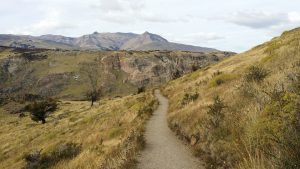
At Passover, there is a song about being thankful for each thing we are blessed with. Dayenu means “it would have been enough.” It is a call to appreciate the small things and to recognize that they are enough. And yet, within the “enough” there is a simultaneous recognition that the first gift or step is not enough without the next one.
In a world where racism is rampant, and where the impacts are real – often deadly, even – is there an “enough” in terms of being collaborators for change? It feels like it is never enough when lives are at stake.
On the one hand, there is never enough until we have envisioned and called into being the liberated and equitable and pleasing community that allows us all to thrive. This reality requires a commitment that is bone deep. It is the kind of commitment that requires constant thinking and action to live into new ways. It is held knowing that upending racism and racist systems is something to die for.
On the other hand, each action, each change to the individual and to the system, needs to be celebrated. For that one moment, it is enough. As long as we know that a new moment emerges when more is needed, and the past action is certainly no longer enough.
What is the first step and what is the next one? For many white people striving to be collaborators, the work begins with learning and knowing and then shifting awareness, then teaching, then ultimately embodied anti-racism practice in relationship with other white people and people of color. Perhaps a move from external to internal; from pointing out the faults of others to seeing how, despite best intentions, we are each implicated in racist systems; from tight vigilance to looser living and correcting.
- Reading books and learning by black artists and intellectuals who have created parts of the world we want Dayenu
- Understanding the history of racism and how it got institutionalized in the US and globally Dayenu
- Bringing a new consciousness to my actions as I walk through the world Dayenu
- Naming racism in all-white spaces Dayenu
- Building authentic relationship across difference Dayenu
- Helping other white people along the journey through openness and kindness Dayenu
- Showing up as a vulnerable person who can acknowledge my mistakes and own my racism Dayenu
- Ongoing learning through books, workshops, conversation, community Dayenu
- Contributing to and investing in multi-racial community at work and at home Dayenu
- Putting my life on the line Dayenu
The work of a white ally or accomplice is never ending, to be sure. It requires a lot of effort. And yet, it should not be a slog. We are doing this for ourselves as much as for anyone else. We recognize that ending white privilege and white supremacy allows us to be full human beings as we disrupt the notion of superiority on which this country was founded.
In my work in trainings and coaching, I encourage both the ongoing effort and the need to celebrate.
Maybe this is one way to be gentle and joyful in our work for liberation – to celebrate each small step as if it were enough while also knowing that it is never enough until we are all free and that we need to want and to create more.
What does it mean to you to do equity work with both insistence and gentleness, step by step?
“Ours is not the task of fixing the entire world all at once, but of stretching out to mend the part of the world that is within our reach… What is needed for dramatic change is an accumulation of acts, adding, adding to, adding more, continuing.” – Clarissa Pinkola Estes
April 13, 2018
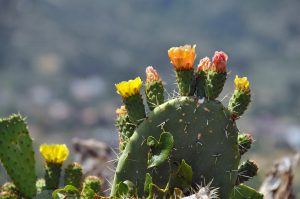
Everything grows.
Everything changes.
And you will be undone forever.
Pursuing racial equity and systems change is a forever equation. I am noticing that our clients and friends believe that if we just implement racial equity, diversity, and inclusion “the right way,” our organizations, movements, and networks will immediately become effective multiracial ecosystems that produce transformative results.
We will always be undone. People and systems – the very world we live in – are ever changing and reverting and that’s why I have to be honest that the work of racial equity will always be unfinished.
People are always coming in and out of our organizations, some with knowledge of our path to create racial justice and others completely unknowing and beginning the discovery of systemic racism. Even if we root out systems of injustice and racism in specific institutions or sectors, they will exist in other places and invariably slip back into our ecosystem. The world is encased in racial stratification. We can dismantle racism in one territory and it can spread elsewhere as people and their ideas travel.
Oppression cannot be fixed. It’s not a linear proposition. It swarms, grows, gets attacked at moments, dissipates, and then finds its way back into our systems as fearful ways of thinking and unproductive ways of doing. And because we are a species and planet dependent on each other, the chronic patterns of racism can reenter our minds and societies. We are imperfect people in deeply imperfect systems.
We are making progress but it’s not the kind where there’s a clear end in sight. We’re learning together. We’re trying new practices of shared power. We’re rooting out racist policies in our laws and organizations. Our systems are feeling the pressure because of our joint actions.
But we won’t do it “right” and we won’t get it “right.” We will be undone.
But don’t let this disappointment get in the way of persistent bold action.
We will have moments of clarity. Moments of seeing new possibilities. Months of progress in our leadership for equity and justice. Years of growth and learning. Examples of power shifting and sharing all around us. Detrimental laws defeated. It will feel like freedom, like less damage is around and inside of us.
Let’s see ourselves as equilibrium makers, re-introducing people to see the problem of racism once again, re-balancing power as the dynamics return, re-calibrating systems when they revert, revisiting change in ourselves and others with humility, and re-birthing our best nature and ideas toward liberation.
Each of us are needed to extricate the roots of racism. We can still be a constant catalyst for change all the while knowing that we will be undone.
April 4, 2018

The following is an excerpt from the third in a series of posts on networks, education and learning. The full post and series are published on the Education Week website. This post builds on two previous ones – Connection is Fundamental and Why Linking Matters – and looks at the importance of structure in supporting network effects while considering equity and power dynamics.
Networks are not necessarily easy to control in terms of their overall structure, especially when they are large and complex (diverse and widely distributed). And it is important to note that there are network phenomena that may tend to pull a networked endeavor in a certain structural direction.
For example, homophily is a phenomenon where social networks tend to form clusters of nodes with similar properties or attributes. This is captured by the adages, “Birds of a feather flock together,” and “Those close by form tight ties.” The result can be self-segregation along various lines of difference, for example racial, cultural, or class divisions in schools. Or consider the current pronounced political polarization in our country. The key to confronting homophily is to be both aware of the tendency and diligent about creating structures and incentives for bridging across boundaries.
“Opportunity … depends, at least in part, on our inherited networks.”
One of the great hopes and marvels of networks is that they can be liberating, especially in the face of bureaucracy and various barriers (see more about “network effects” in the previous post in this series). While this is worthy of celebration, another important phenomenon to be aware of is that networks can be deeply inequitable.
Read More
March 27, 2018
“We cannot live for ourselves alone. Our lives are connected by a thousand invisible threads, and along those sympathetic fibers, our actions run as causes and return to us as results.”
– Herman Melville
In an earlier post in this series on networks and education, we explored the underlying vitality of connection and flow in our world and how this can create opportunity and health in our lives and in learning. According to network theory and practice, it can make a big difference when we are aware of who is and is not connected and then act intentionally to build and leverage relationships in both number and quality. Stories from a variety of fields illustrate the phenomenon of small and great change being rooted in creating ties and flows between different actors and elements in a system.
Now let’s take a step back and ask, “What is a network?” A basic definition is that networks are nodes and links. That is, they are elements of different kinds (people, schools, other kinds of organizations) that are tied together (consciously or unconsciously) in some larger pattern by one or more types of connectedness–values, ideas, friends and acquaintances, likes, exchange, transportation routes, communications channels. Social networks, comprised of individual people or groups, can be experienced in person and also virtually.
In the world of education and learning, here are some of the ways networks show up:
- Open classrooms – Digital technology is used to connect students to a wide array of information and a diversity of community partners and real-world learning experiences both within and beyond a classroom’s walls. (e.g., CommunityShare)
- Communities of practice – Students, teachers, and school or district leaders connect their learning, engage in inquiry, and refine practice through learning webs within or across schools and districts.
- Community schools/schools robustly connected to local community ecosystem – Connections create opportunities for authentic learning, job readiness, and student resilience; wrap-around services ensure fuller suite of supports for students. (e.g., Dudley Street Neighborhood Initiative)
- Networks of schools – Schools are connected by their alignment to a model or philosophy, influencing a culture shift within the broader field of education.
- Movement networks/”networks of networks” – Collectives of schools or education organizations push for transformation in the field toward greater equity, democracy, “education as a public good” (e.g., National Public Education Support Fund).
- You (yes, you!) as a network (student, teacher, leader … all learners) – As individuals, we are (or can be) internally connected to multiple intelligences and ways of knowing–analytical/intellectual, embodied/somatic, emotional, spiritual.
The Value of Networks for Education and Learning
So what is the big deal about networks? Is there really anything new here? These are questions that come up, though seemingly less often over the past five years or so with the proliferation of various social media. On the one hand, networks have always existed as long as life has existed, so there is not anything new here. On the other hand, the various digital tools and technologies that have evolved to rapidly and dramatically shrink the world are showing us what more intricate and efficient forms of communication and exchange can make happen.
And while it is true that virtually all collaborative forms of social organization meet the basic definition of being a network (coalitions, alliances, organizations, communities), not all such forms leverage to the same extent what are called “network effects.” … To continue reading this post on the Education Week website, go to this link.
“You’ve got to keep asserting the complexity and the originality of life, and the multiplicity of it, and the facets of it.”
– Toni Morrison
March 22, 2018
This post was originally published on this date in 2016 and we find it enduringly relevant today. It contains a true story and a Facilitator’s Guide for handling situations like this.
A True Story
At a recent training I was leading for an all queer and multiracial group, an older white man “John” took offense to my use of the word queer. As an icebreaker, I had asked the group to share in a pair, when did you first know you were queer? During the debrief, John took time to explain how the Q-word brought back painful memories of the many ways he was shamed growing up. As he explained, he got emotional and then said “using the Q-word is like using the N-word for me.” And he actually said the N-word.
The air in the room suddenly got heavy and many people shifted uncomfortably in their seats. The three black men in the group looked stunned, and the rest of the people of color in the circle turned to me to do something. The white man kept talking, completely unaware of that this micro-aggression had caused a change in the room. I waited for a white person to address what happened. But folks remained silent, so just as the next person began sharing, I stopped the process.
“I want to stop and check something out with you and the group. Is it ok if I do that?” I asked John and turned to the group to seek their approval. “John, thank you for sharing the impact that I had on you when I used the Q-word in this circle. I want to account to you for that. I also heard you use the N-word and I am wondering if you would be open to hearing the impact that that word could have had in the space?”
Read More
March 10, 2018
“Relationship is the fundamental truth of this world of appearance.”
-Rabindranath Tagore
The following is a segment from the first post in a series focused on network theory and its actual and potential applications to education and learning. This series appears on the Education Week website and was invited by Next Generation Learning Challenges (NGLC) as it explores the potential of networks to advance equity, adaptability and excellence in public education …
Network theory is on the one hand a new and emerging interdisciplinary science and on the other hand it is ancient, grounded in indigenous and experiential ways of knowing about the reality of interconnectedness. Another important element of “network science” is imagination–the use of creative expression and metaphor that recognizes and works with relationship and relatedness that can help to guide our minds, hearts, and hands. These posts will draw insight from this broader understanding of network theory. This first post offers a larger view of the nature and potential of networks in our lives.
There is a lot of talk about networks these days. And there is considerable hope and effort being put into more interconnected ways of working and learning in order to bring about much needed innovation and change in multiple fields, including education. This is exciting, and at the same time I am concerned that the conversation can be relatively narrow, or leap ahead of some deeper insights of network theory and practice. In so doing there is a risk of not getting to the more promising potential of networks.
Connection is fundamental. This is a core observation of network theory (and various wisdom traditions). Network theory starts by pointing to the fact that we often talk about the world in terms of individual things and their properties. This kind of approach may work in situations and in systems that are fairly simple and relatively static. But when the interactions and the complexity of the elements in a system increase, it is the connections that determine the characteristics of the elements in the system and its overall health. This holds true for any kind of dynamic living system–ecosystems, human communities, economies, etc.
“Network theory suggests that what a system becomes emerges from the complex, responsive relationships of its members, continuously developing in communication.”
-Esko Kilpi
Life is at base a network. It thrives on connection. We all know this, experientially, because we are alive! And when we are not feeling alive or lively it is often because we are disconnected, cut off in some way–from other people, from the natural world, from our selves (feelings, bodies, values), from power or a sense of purpose. (See the UK’s recent move, incidentally, to appoint a Minister of Loneliness to address the multiple ills stemming from growing social isolation). Life thrives on connection. …
To continue reading this post, follow this link.
February 20, 2018
I am becoming pretty good at compartmentalizing – focusing on the work that is right in front of me, even as more tragedy surrounds us and more outrage wells up within me. It’s certainly functional to be able to do that. But I don’t know that it’s always good. Part of me despairs. How many more people – and especially children – have to die needlessly? How is it that in other countries, people experience mental illness, firing from a job, expulsion from school, and all manner of personal tragedy without turning to mass killings? I want to be in the streets. I want to raise my voice with others in ways that will make a big and immediate difference. I want an end to politicians offering “thoughts and prayers.” I know there is power in prayer, and I also know that powerful prayer motivates powerful, compassionate action.
In a workshop the other day, we were exploring the ways that collaborative leadership practices support organizations and networks in pursuing broader diversity, deeper inclusion, and expanded equity and justice. Someone asked me if I really thought we would ever get closer to justice in this country, given the recent sharp turn we’re taking in the opposite direction. I offered two thoughts in response: (1) I think things are getting much better and much worse at the very same time. There is an expanding consciousness of the sacredness of human life and the interconnectedness of people and the planet; and many people who suffer under oppression are finding ways to resist and to build alternatives. That is all advancing and it’s good. And, the forces of racism, sexism, homophobia, zealotry, and more are also advancing, most recently with tacit and explicit support from the White House. (2) As a woman of faith, what keeps me going is anticipating that in 50 years, when people look back on this era, they will see it as the last moments of flailing by a dying beast. May it be so!
Our friends at Spirit in Action remind us that there are four interdependent ways to transform society: “reimagine culture, resist domination, reform institutions and recreate society.” Whichever of the “Rs” are in the center of your work, go forth with strength and power!
February 19, 2018
“It’s not knowing what to do that counts, it’s knowing what to do when you don’t know what to do.”

Last week I had the privilege of co-leading a three day Facilitative Leadership for Social Change training for a group of health equity advocates in Springfield, Massachusetts. It had been a while since I had done a training of that length, and it was a nice opportunity to not only cover more material, but to deepen the conversation and practice. Along the way there were many good questions about what to do around various challenges when one is co-leading a collaborative change effort. And a common response was, “It depends.”
Every group is different, every circumstance is different, and while it might make sense to take some cues from what has been successful in other situations, the caution is not to assume that it will work, or work in the same way, in other situations. This is one reason that I personally do not like the phrase “best practice” when talking about collaborative and facilitative change work. Given the complexity of people and social systems, I find it more helpful to think about “promising practices.”
That said, a promising practice that came up time and time again in our three day training, was the practice or practicing, of ongoing devotion to muscle-building in leadership skills such as process design, facilitation, coaching (leading with listening and inquiry), systems thinking, visioning/imagining, mutual learning and collaborative decision-making/governance. And in undertaking such practice, we at IISC would suggest this is not about achieving perfection. The humbling and exciting thing about collaborative leadership, in my humble opinion, is that it is a life-long learning pursuit and an endless opportunity to deepen understanding of ourselves, others and living systems. For this reason, one of my mantras is:
Practice for presence, not for perfection.
That is, practice can help practitioners get beyond being caught up in simply “learning the scales” of collaborative leadership, in trying to get the skills “right.” Practice at its best can contribute to a state of being more fully present to what is happening in any given situation and being able to work with that in powerfully improvisational ways.
Furthermore, over the past year, there has been a clear call for practice and practices that are explicitly about cultivating spaces to hold difference and tension and trauma. That may be another order of presence characterized by a deeper tuning in and movement away from more transactional processes to ones that are emergent, co-created and geared towards supporting moral courage and imagination. What that can require is vulnerability and a humble sense of “being with.” What it stands to make possible, as opposed to business-as-usual, is growth and real movement forward, together.
February 2, 2018
February 5, we launch a connection/productivity experiment called Rays. It derives from a critical piece of team infrastructure we invented while working at IISC, the secret ingredient to our team’s performance. Without it, we noticed a gap and with it, the work (and our team) flowed more smoothly. That makes us think our little practice could benefit others. So we’ve decided to do an open call for participants.
The practice is a short, daily meeting: Rays. For less than 30 minutes, you will join an online call and share three things:
- RAY: something you are grateful for
- TASK: something you are doing that day
- BLOCK: something literal or existential in the way
There is no solving. It’s just reporting and listening.
We are inviting people to join us in February (starting as early as the 5th!). You commit to showing up to an online call for 5-days, up to 30 minutes, and sharing.
Read More
January 31, 2018

Power. Networks. Love. These three aspects of the IISC’s Collaborative Change Lens were not the official theme of the Victory Institute’s 2017 International Lesbian, Gay, Bisexual, Transgender, and Queer (LGBTQ) Leaders Conference, but they were woven throughout everything that happened there.
The Victory Institute works to get LGBTQ people into elected and appointed office. Their annual conference brings together elected officials, leaders, and advocates for three-days. The content of the conference focuses on skill-building, information sharing, and formal and informal networking.
The first gathering of this group took place in 1984 with about a dozen people. Attendee John Heilman, city council member of West Hollywood, described the gathering as “more like a support group” than a conference. It has now grown to a convergence of over 500 attendees from all over the world.
Power
The reclaiming of power is central to the mission of the Victory Institute: “LGBTQ Victory Institute works to increase the number of LGBTQ people in public office and to provide programming, service and other support to help ensure their success.”
Why do we need more LGBTQ people in public office? With characteristic wit and bluntness, former U.S. Representative Barney Frank, the first person in Congress to come out voluntarily, said, “If you are not at the table, you are likely on the menu.”
The data tells the story this way: there is a direct correlation between the number of LGBTQs in elected office and the inclusion and equality of a jurisdiction’s policies.
Networks
In traditional ways, conferences tend to have a strengthening effect on networks. At plenaries and breakouts, attendees of the Victory conference had opportunities to connect around shared interests and maybe even to flirt a little. But the conference used the opportunity of the traditional schmoozing times to amplify traditionally marginalized voices. There was a “Leading in Color” reception which lifted up people of color, an International reception, and a Women Out to Win reception. The Institute also strengthened their pipeline for young leaders with the Victory Congressional Internship Meet & Greet.
Love
The feeling of love was palpable throughout the conference. Because of the bullying and harassment we’ve experienced, no one knows better than the LGBTQ community how much humans need to be celebrated and cheered. Whenever someone announced they were running for elected office, the audience burst into applause.
The spirit of love and humility was also present in a frequently repeated quote from Danika Roehm, the transgender metalhead stepmom, elected as the first openly transgender person to the Virginia Assembly – the first to serve in any state legislature actually. Roem won against Robert Marshall, the sponsor of a bill to restrict public bathroom use by transgender people, who referred to himself as Virginia’s “chief homophobe.” After the election, when asked if she had anything to say about Marshall, Roem said, “I don’t attack my constituents. Delegate Marshall is my constituent now.”
Pretty lucky constituent.
January 29, 2018
I migrated to the United States in 1998 via the F1 visa application process. This process allows a family member who is a citizen to apply for immediate relatives to become permanent residents. The premise of this process is one of family reunification and the applicant (citizen) must be a resident in the United States during the greater part of the application period. In my case, my mother was the applicant so this meant that during the better part of two years while I was in high school my mother had to live in the United States while my brother and I lived in Trinidad. Being separated wasn’t the only thing we all/each sacrificed; there are several ramifications of this process that go along with the privileges of becoming a US citizen. And, I don’t make light of those privileges, especially as my particular immigration story is indeed one of great privilege relative to the experiences of those who are currently under direct attack by the federal government and by the right wing media. (I say “currently” not to say that undocumented immigrants were not under attack by previous administrations, but to say that I do not know when naturalized citizens and permanent residents will be under direct attack, as well. We’ve already seen it begin with the “Muslim Ban.”) But this reflection isn’t about the politics of migration, although we would do well to continue to reflect deeply on that. Rather, I am contemplating the state of my heart as an immigrant.
One thing I have noticed over the time that I have been in the US is that my heart is always torn in two. As someone who straddles two different ways of being, two different nationalities, two different ways of looking at the world, it has been a doozy for reconciling identity. On the one hand, this is stressful, but on the other, like so many other third culture people I know, it is actually a great super power. I can see the world from different perspectives and can necessarily integrate them in a way that produces something better than the sum of the parts. Immigrants have super powers, y’all. We can take the best of many different worlds and create beautiful, delicious, vibrant expressions of what liberatory futures look like.
Today, one of the experiences that I’m yearning for that comes from my culture is the annual ritual of liberation we call Jouvay or J’ouvert. I won’t go into all the history of colonialism and slavery that gave rise to this tradition, but I will say that in the modern era it is a great spiritual cleansing and a public ritual of liberation that takes over the streets of Port of Spain during the climactic second-to-last morning of the Carnival season. (This year it will take place in mid-February.) Carnival itself is a letting go, a festival of liberation based on the pre-Lenten Catholic festivals of the French and Spanish when they gave one last hurrah to the vices and proclivities of the flesh before engaging in the 40-day long period of fasting beginning on Ash Wednesday. During our Jouvay, participants adorn themselves in handmade costumes, and in mud, oil, paint, and cocoa or baby powder, and they chip through the streets in great abandon under cover of darkness in the early hours of the morning until just after sunrise. Jouvay begins at 2:00 a.m. and ends around 7:00 a.m.! I am watching friends in Trinidad prepare for this day by gathering mud, by gathering the friends they want to be with on the road, and by beating the drum of anticipation for the ritual that allows for release and rebirth.
I crave this ritual or any other ritual of liberation that allows us to let go, to be free, without trappings and accoutrement, without fear. To experience what it is like to just have love, and music, and dance, and laughter, and spirit…and rum. I am craving stories of the feeling of liberation here in the US. I am craving a liberation praxis. So often when we are asked about liberation as activists, we describe the struggle, the fight, the organizing, the process towards liberation. But I want to know…what elements of liberation are people experiencing right now even in the midst of the struggle? Even if it is for just a moment or an hour, when do you feel free? What are the experiences we want to expand in our liberatory future because they make us feel a little bit free now?
